
Substance Abuse or “Drug Addiction” is considered a chronic disease by the Western world, which makes people labeled with this condition castrated from hope of real healing. The idea of an incurable disease becomes a type of curse, chaining people to the belief of the need to depend on sponsors, group therapies and legal drugs for the rest of their lives. The common solution towards drug addiction is either to replace an illegal drug by a legal one or to suppress their use through the social pressure coming from support groups and loved ones. The problem with these “solutions” is that they are not addressing the root of the problem from where the need to abuse substances stems. They are dealing only with the symptoms while aiming to offer a manageable life inside the framework accepted by culture and society.
The cycle of addiction begins when the established health system creates dependency on drugs by prescribing them over a period of time and then criminalising them once there are enough people abusing the substance. This is feeding prisons, rehab centers and health institutions that treat addicts as chronic cases without hope of healing. The cycle continues by creating the replacement drug (medicine), which is usually more addictive but legal and since it’s been prescribed by respectful white coated Psychiatrists and Doctors, is that what we consider medicine. Thus the wheel continues its spin. For example, Methamphetamine was approved in 1944 by the Food and Drug Administration in the USA to treat alcohol addiction. By the 1950s, this legal “medication” had become very popular due to their addictive characteristics. Until this day, Methamphetamine is still available under the name of Desoxyn for very limited uses. Opium was given to women in the 19th century for menstrual cramps and infants for tooth pain. In 2007, abuse of the painkiller Fentanyl killed more than 1,000 people. The drug was found to be thirty to fifty times more powerful than heroin. Today, drugs such as Morphine or Codeine that derive from Opium poppy are legal, prescribed and administer under “heavy” restrictions.
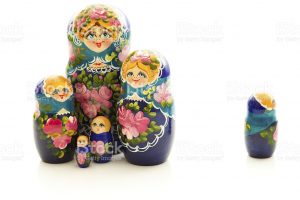
Criminalisation and marginalisation become the fuel for the engine that drives the cycle of addiction.
The replacement of one drug for another is surely not the way, even though the user stops being marginalised by switching to a legal drug and is able to find his or her place in society as a chronically ill person. Support groups like Narcotic Anonymous (NA) or halfway houses may relieve some pain by the communal energy and sharing dynamics that happens in group therapy, but they fall short of addressing the root of addiction and offering true healing.
The stronghold of addiction is the belief in it as a chronic disease: Once an addict, always an addict.
What is Substance Abuse or Drug Addiction all about?
The abuse of all substances should be understood as an unhealthy way to manage emotions. The addiction originated during a process of acquiring a wrong tool to cope with the emotional and/or physical pain that the user was feeling at a particular moment in life. The need to bond and connect is natural in human beings. Usually it is the lack of genuine personal connections with others that leaves space for creation of dependency to substances that brings relief.
Marginalisation is the factor that strengthens the relentlessness of the grip that a drug has over the user. The disconnection and distance from peers and loved ones fuels the dependency aspect as the person takes refuge in the domain of the drug. It is important to understand that people abusing substances were not capable of managing their suffering and the emotional pain. That is what drove them to reach for the drugs that gave relief, turning the substance into a tool to cope with life. Illegal substances that create addiction become an unhealthy way out of pain not only due to their harmful chemical ingredients, but also due to the sensation of guilt, shame and transgression that comes from the social marginalisation that will lead the user to toxic environments. Making these substances illegal has forced people to use them in the worst possible contexts, creating environments with a high degree of energetic intoxication.
Legal substances that create addiction are the silent killers that the Western world is using to keep humanity asleep and disconnected. These substances maintain social alienation as the purpose behind their design to numb emotions, which undermines the possibility of human connection. The same is happening with the addiction to mobile technology (smartphones).
The most recent census done in 2015 by the American National Institute on Drug Abuse (NIH) shows that legal and less-stigmatised drugs (alcohol and marijuana, particularly) unsurprisingly make up a large percentage of the addicted population.
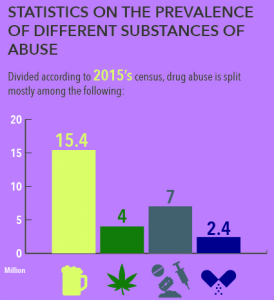
Alcoholics comprise a massive 15.4 million of substance abusers. If the war against drugs is so big and so rooted in demonising certain substances, why isn’t there any large scale war on alcohol?
The most harmful substance and the one that creates the worst addiction in the world is available at any corner of any street in the world. This is a clear representation of the incoherence we are living as humanity and the absolute confusion created through myths and misconceptions regarding which substances are “good” or “bad”, The only basis for that evaluation is the level of their acceptance in society, not the level of suffering they are creating.
Lost in Drugs
Once people begin to depend on their daily dose to be able to “function”, all sort of emotional, biochemical and energetic processes start to take place, which fully locks the person into a state of complete enslavement and submission. We could say even that here is when the person loses his or her free will and consequently the substance begins to take control of the person’s life. Once this is established together with the idea that one will always be an addict, it becomes the strong grip that keeps the person chained to the substance.
Hard drugs like alcohol, cocaine, methamphetamines, crack, opiates, opioids to name a few have an energetic and biochemical grip that keeps the body in need for more. These drugs take possession of the user and lock them into dependency not only by the bond they are sharing, but also because withdrawal from them causes a sense of death, emptiness, total hopelessness and in the case of alcohol, even delirium tremens.
Considering that everything is energy, drugs have an energy of their own. In some cases, we can even call them entities. These energies have caused so much pain, suffering and death, that they have become a type of demon, like a curse created by the same fear and pain that is feeding it.
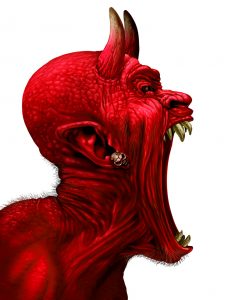
The demonisation of drugs and the interpretation of the concept of addiction in the Western world is giving addictive substances a huge power over humanity, incapacitating people with the belief that they have a disease with no cure.
Each drug has its own energetic influence or shape. If one looks carefully, the shape of the face and eyes of the person begin to change as the energy of the substance begins to permeate the person’s energy. If we look at two people with a similar history of long term drug abuse, we would think they are blood relatives. Their facial expressions and their eyes are very similar due to their relationship and connection with the same drugs. When a person is addicted to a drug, the person has made itself and the drug into one.
Hard Drugs, Psychedelics and Entheogens
We need to truly understand the difference between Drugs, Psychedelics and Entheogens. Commonly in the Western world substances are classified into mainly two categories, either legal or illegal. We are placing in the same category drugs like Heroin, Cocaine, Crystal Meth, together with LSD, MDMA, Marihuana or now even in some countries Ayahuasca or Iboga. They are all put in the same pot of illegal substances. What is even more absurd, is that the legal drugs, which most of them create addiction and serious side effects creating additional diseases, we call medicine. We don’t even call them for what they are, pure high grade drugs, made in the finest chemical laboratories.
The established health care system does not want to endorse psychedelics or entheogens as an alternative medicine since they offer a different perception of our thought-created reality that can compromise the status quo and “order” of the society. Anything that can prevent the established system from imposing its own agenda will never be endorsed or allowed for the general public. So basically, any substance that can help to expand the mind, enhance the capacity to feel, seek other forms of perception or awareness and connect to the divine is not legal or allowed. On the other hand, many substances that keep great portions of humanity dull, asleep, tamed and obedient are legal, prescribed, endorsed and promoted. This is the main reason why alcohol is the main legal drug of the world, even though it is the one substance that causes more physical, mental and spiritual harm than all other legal and illegal drugs in the world put together. Along with Nicotine (cigarettes), it has killed more people than all the world wars combined.
There are only few substances that, if you are in the grips of addiction, not taking them can kill you. Alcohol is one of them.
We can say that there are 3 main baskets. We can name a few substances in each:
Hard Drugs – Alcohol, Nicotine (Cigarettes), Cocaine, Heroin, Morphine, Amphetamines, Methamphetamines, Crack, Bath Salts, DXM, PCP, Inhalants, Benzodiazepines, Methadone, GHB, all pharmaceuticals that are prescribed for OCD, ADD, ADHD, Depression, PTSD, Anxiety, Addiction, Chronic Pain, Schizophrenia, Bipolar Disorder, mostly all psychiatric drugs, barbiturates and all Opioid based drugs.
Psychedelics – LSD, MDMA, Ketamine, Mescaline, DMT, 5MEO – DMT, 2CB, GHB
Entheogens – Ayahuasca, Iboga, Psilocybin (Mushrooms), Fly Agaric or Amanita, San Pedro or Huachuma, Peyote, Cannabis, Salvia Divinorum, Morning Glory, Bufo, Angels trumpet or Datura
Hard Drugs: Substances that lead to physical addiction and have the effect of numbing emotions. They are sought for their pleasure generating or pain relieving properties. The main trait of these substances is that all of them bring a false sense of relief.
So basically we can see that all the legal drugs that are called medicine are deposited in the hard drugs basket. They are known to create addiction, compulsive behaviours and sexual impotence, among many other complicated side-effects. We can also notice that all illegal drugs in the hard drugs basket were created mostly by the pharmaceutical industry and they were legally prescribed and called “medicine” at some point in history.

It will be not a surprise that legal drugs like Suboxone or Sobutex which are now prescribed as “medicine” for heroin addicts will be illegal in the coming years as their addictive characteristics when combined with others drugs can be even worse than heroin itself. For example, OxyContin was prescribed as “medicine” for chronic pain and created an entire opioid epidemic in the USA. In time users have to switch to Heroin to be able to afford their addiction to Opioids. The same Heroin was promoted by Bayer in 1874 to help the addiction that was created by giving wounded soldiers medicine (morphine) as early as during the American Civil War and was labeled as a non-addictive substance. It was even prescribed for children as a cough, cold, “irritation” medicine as late as 1912, allowing the health system more than 30 years of prescribing Heroin as medicine.
The health care system has a well-documented history of keeping harmful substances in circulation for a very long time before they become classified as harmful. The process of reassessment and reclassification is slow and people pay for that with their lives. The substances in circulation change, but that general mechanism is still operative.
According to the American Society of Addiction Medicine (ASAM): Out of the 20.5 million Americans from 12 years of age and older that had a substance use disorder in 2015, 2 million had an addiction involving prescription pain relievers and 591,000 were dependent on heroin. It is estimated that 23% of individuals who use heroin, develop opioid addiction first through prescribed medication.
Substances which are not prescribed or legal like alcohol and nicotine, are considered more generally speaking as only “drugs” by the general public.
Psychedelics
The term psychedelic is derived from the Greek words ψυχή (psyche, “soul, mind”) and δηλείν (delein, “to manifest”), hence “soul-manifesting”, the implication being that psychedelics can access the soul and develop unused potentials of the human mind.
Psychedelics are commonly known for their illusions or hallucinogenic effects, “crazy” visuals and strange behaviours they provoke in users. People are mostly afraid of these substances as they “distort” the ordinary perception of reality. Another way of seeing it would be that they offer a different type of perception of the consensual reality.
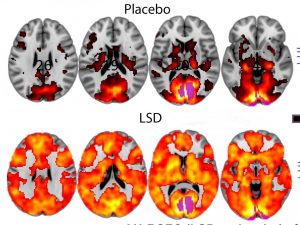
Psychedelics can activate dormant features we possess and give us the possibility to access other forms of comprehension. The current problem with Psychedelics is that they are mostly being used in a recreational way and the opportunity to convert them into a learning or healing experience is lost.
Hallucinogen comes from the Latin verb (Allucinare) – to deceit, to wander with something that is not real. So any substance that we use for the purpose of tripping or to find escape, becomes a hallucinogen, including all Hard Drugs, Psychedelics and Entheogens.
So we have a situation where Psychedelics are mostly used recreationally and very rarely in a therapeutic or healing context. Even though Psychedelics do not create addiction, they are all illegal in most parts of the world. One can enjoy an experience with psychedelics, but hardly anyone is tempted to take them every day and if some do try, the Psychedelics will not produce the same effect, which leaves a small chance of creating an addiction.
Psychedelics are notorious for creating schizophrenia, psychosis, paranoia and other psychological discrepancies. These symptoms may appear when there is no safe context or guide in the experience. Usually these situations arise when users mix other substances and are abusing the psychedelics for their hallucinogenic effect, seeking to escape their own reality.
Psychedelics can become vehicles for the exploration of consciousness and the human soul when they are taken in a sacred context, with intention and guidance in place.
Even though psychedelics can be used as a gateway to escape, they are also a doorway to parts of ourselves that can bring huge comprehension and healing if the psychedelics are taken in a therapeutical and/or sacred context. Some consider psychedelics as one of the most important creations of humankind as they are the only man-made substance that has significantly widened the reach of our consciousness and offered other forms of perception of the world. We are just not acknowledging their importance, because we are not yet recognising the full importance of consciousness in the world.
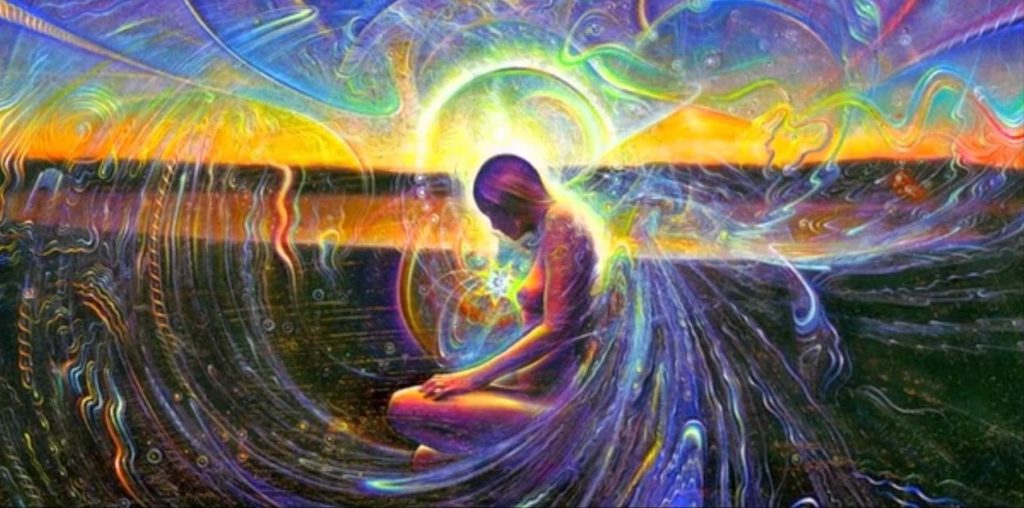
Used in a therapeutical or sacred context, they offer insights or understandings that can bring healing and comprehension. For example, the use of LSD and MDMA in a therapeutic context is proven to be a very effective treatment for Depression and PTSD. That is not to say that if someone takes LSD or MDMA in a recreational way, they will cure themselves of Depression or PTSD.
There has been significant research done to understand the healing possibilities of psychedelics and entheogens backed by privately funded groups like MAPS, the Beckley Foundation, ICEERS and the Heffter Research Institute. They are all working on promoting the proper use of psychedelics and entheogens with the aim to legalise them for therapeutic purposes to treat conditions like Depression, PTSD, Addiction and Spiritual emergencies.
Entheogen – A term derived from the Greek ”entheos”, to have “God (theos) within” or more loosely translated as ”inspired” and ”genesthe” meaning “to generate”, that which generates inspiration. ”Entheos” was typically used to describe poets, musicians and artists. The word entheogen thus exposes itself as meaning “that which generates the divine in a person”. The term was a replacement for ”psychedelic” and ”hallucinogen” which both carry certain denigrating connotations.
Entheogen is a term to be used in strict reverence of substances that act as divine sacraments towards healing and facilitate transcendental experiences in a sacred context.
Entheogens are mainly Master Plants that can induce an altered state of consciousness and offer an encounter with the true self or our divine nature. These plants are teachers which contain within a divine intelligence that one can establish a relationship with and comprehend through the perception, wisdom and energy of the plant. Master Plants possess an intelligence that can be accessed through a sacred approach. The realizations and comprehension that this communication brings allow the person to heal their suffering and understand many things about their own self and the universe. The insights obtained through the direct experience with Master Plants can make shifts in awareness that can destroy “realities” and false concepts that are creating suffering which the person was conditioned to believe and knew as real. What we can say about entheogens is that they are de-hallucinogenic, they show the way out of the illusion of the mind that is usually causing suffering and they offer an opportunity to go back to the self, so that one can see what is real and thus become able to heal oneself.
It is important to emphasise that Master Plants taken for recreational purposes or without a sacred context, become a psychedelic. If abuse exists for some exotic reason, they can even become hard drugs. However, in all cases, there is no single substance that if used as an entheogen can produce addiction.
The fact is that Entheogens and Master Plants are proven to be one of the most effective tools to overcome addiction and they offer a profound transformation with a real opportunity for change.
Master Plants
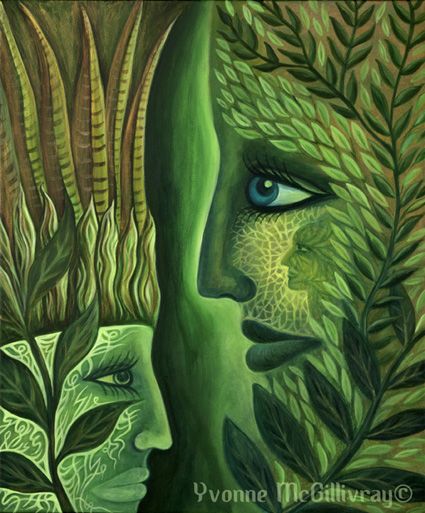
Master Plants that are considered Entheogens are those that offer an altered state of consciousness, but there are others that are healing and working at a subtle level only, without a noticeable altering of consciousness. They are also considered teachers and their intake is mainly through isolation processes that are commonly known by dietas in the Amazon. The dietas have the same fundamental structure of the “Vision Quest” done by the Native Americans seeking to connect with their guardian spirit. The isolation process required for the intake of Master Plants is needed to silence all aspect of the outer world and to connect with the intelligence of the Plant. Usually the communication is mainly through the dream state and through it, one is able to comprehend on a conscious level what one needs to understand specifically in order to heal.
There are dozens of Master Plants which all possess unique energetic characteristics and subtle healing functions that can help open, align and harmonize the subtle body if taken within a specific healing structure and with a sacred approach.
What is important to mention about these Master Plants that do not fall into any category of Hard Drugs, Psychedelics or Entheogens, is that they can offer very profound healing by providing an opportunity to heal the very root of any suffering one could be dealing with.
The process of isolation with the intake of Master Plants grants a unique process of transformation and healing that no entheogen or psychedelic taken by itself could ever offer.
When it comes to healing addiction, there are many deep wounds that need to be addressed in order to obtain a level of peace that enables the person to live life without needing to abuse substances to cope with the emotional pain. A process of isolation with Master Plants and Entheogens can offer an opportunity to begin to understand what those wounds are, where they come from and finally what purpose they have in one’s life.
The incredible opportunity for observation that Entheogens and Master Plants can provide is about allowing us to see our wounds without judgement, with no guilt and no one to blame, without any sense of victimisation, just seeing them for what they are. Accepting them and seeing them for what they are, is the first step in understanding the reason behind their existence in our lives. The transformation or evolution happens as the person begins to integrate the comprehension of their cause or purpose, freeing themselves from the pain and healing the wounds from their core.
The exercise of isolation with Master Plants is a process of inner transformation that can offer a possibility to completely change the perspective of any circumstance, of one self, the world and the universe.
The Context
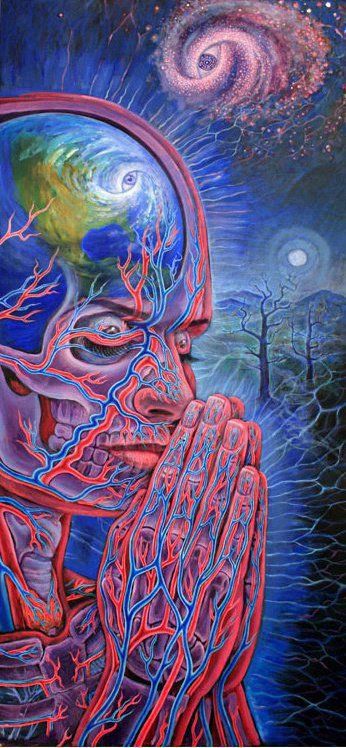
The context is everything. When it comes to healing with Psychedelics and Entheogens, each one offers a unique perception. It is vital that there is an intention to connect with oneself and the universe when taking either one. Usually the best context for these experiences is with a guide, inside nature with a private and sacred space. If there is no possibility for such privacy, then it is only advisable to proceed with a very small group of people who are seeking to heal and connect with themselves. The experience should always be oriented inward and not outward. For that reason there is really no purpose in taking them with someone related as the experience is individual and in the best scenario, in darkness or eyes shut, trying to feel only oneself with the least possible distraction.
In the case with Psychedelics, they are providing a molecule that is activating certain parts of our brain that opens energy channels that can bring other forms of perception. For example, In the case of LSD, it allows opening of the third eye and our capacity to see or the MDMA that helps to open the heart chakra and enhances our capacity to feel. It is extremely important to take Psychedelics in the right context as they don’t possess an intelligence or divine consciousness that can serve as a guide for the experience. The user is open to the surrounding energies. If taken without a context, very often the effect can lead to terrible experiences and destinations.
Now with Entheogens, the context is in its own way the sacred approach from where one is trying to access this form of wisdom. Hence, the Sacred Context. It is not only important where specifically one is realizing the experience, like in nature vs an apartment in the city. The preparation through a diet is also required. It is designed to begin to purify the mind and body from excess of noise and to prepare the spirit for a sacred encounter. Taking entheogens without any previous diet and cleansing will turn them into powerful psychedelics. Entheogens need to be accessed through a sacred approach with the utmost respect.
To heal with entheogens one has to abide to a specific healing protocol that serves as a structure for the user to be able to prepare the mind, body and soul to access the consciousness and wisdom of master plants.
The Root of Addiction
The root of addiction in a person who is in a situation of substance abuse is linked specifically to the need to cope with the pain that the wounds of the soul are causing in the daily life. The pain of these wounds is responsible for the person not being able to stay present with its own self and with what is happening in its life. These wounds usually originate in the family, social and cultural environment. In order to heal them, it is necessary to understand the relational dynamics established mainly with the inner intimate circle. This is the main importance of doing a long term healing process when it comes to healing from addiction. Coming out of the dependency from a drug is the first step and usually an easy one, but then comes the real work.
The Western world is believing a myth that the addiction is caused by these deadly and evil substances. The fact is that 80% to 90% of people that have used any type of drug, DON’T end up as addicts. The question is that if only 10% of people who used drugs got afflicted with addiction, what is it then that creates dependency if it is not the substance? The best example for this is Heroin, a substance that many would think creates a full on addiction once it enters into the veins. The fact is that Diamorphine, which is the purest form of Heroin, is given daily to millions of people worldwide at hospitals for many physical operations that require a strong pain killer. It is administered throughout a significant period of time, even weeks on a daily basis. Despite that we are not seeing millions of addicts coming out of the hospital wanting for more and becoming enslaved to the substance.
The addiction cycle is usually created within a dynamic established with codependent(s) who in some cases are providing resources one way or the other, allowing the person to keep up with the abuse of substances. This is an important element that needs to be addressed to heal addiction. There is a need to reestablish the relationship with the codependent into a healthy one based on respect and love. Otherwise they will continue to re-create the abuse scenario all over again.
It is true that some substances have addictive characteristics, but it is not the substance that creates addiction. The lack of capacity to manage emotions and the relational dynamics that people have created are in large part what creates addiction.
Conscious of the Abuse or Addiction & Ready to Heal
There is no purpose in doing a treatment for addiction if the person abusing substances is not fully ready to heal. The main problem we see with treatments that “fail”, is due to the person not being willing to confront anything on their way towards healing. If there is pressure from family members or others to do the treatment, it is likely that the person will not finish the treatment due to the challenges of the healing process or they will finish it only to gain back trust or privileges that were threatened to be taken away by their intimate circle.

It is fairly easy to know when someone is ready to heal, they are the ones asking for it.
People abusing substances are usually looking to hit rock bottom to enter into a type of catharsis that becomes an opportunity to snap out and realize what they were seeking to understand through the use of substance. Once they reach it, they ask for help. If they are pressured into doing a treatment, it is probable that they are only doing it for acceptance or control and they will not endure the challenges of the process as they will not place their entire commitment towards healing.
The need for healing has to come from the depth of the person’s heart, accompanied by a fierce strength of will power fully determined to break free from addiction and a genuine desire to claim back one’s life. If this is in place, there is a high chance that the person will finish any treatment successfully and be able to completely free themselves from addiction.
Not Ready to Heal
In the usual cases we have observed with families or loved ones that are worried for someone’s else addiction, they begin to retreat their love or attention from the “addict” and threat their connection in order to force the person to seek healing. This, as much as it may seem as a loving act towards the person with the addiction, is the worst approach to really help the situation that the person abusing substances is living.
If there is a family member or a loved one with a drug problem that can’t be tolerated any more, the proper approach is to discuss the situation with as much calm as possible only when the person is sober. The purpose is to make the person understand that the family can’t contribute any longer to the current situation and that the financial resources that they might be using for continuing their addiction will be limited, but not the attention and love. This should be said with a lot of compassion and caring, clearly stating that when he or she is ready to heal, they can offer financial help, but only if it is intended for healing.
It might seem a bit cold to cut them off or ask them to leave the house even in some cases, but usually is a shortcut to hit rock bottom and a good reality check for the user in terms of their real friends and many other illusions that will fall away very quickly.
The best help to give to someone who doesn’t want it, is none at all. There is no help that will reach anyone who does not want to receive it.
Interruption of Abuse
To interrupt substance abuse it is necessary for the person to be totally disconnected from their habitual environment and to enter a healing process that allows them to leave the domain of the substance and grants them an opportunity to free themselves from the clutches of dependency. In severe cases such as opiates and opioids, the use of certain entheogens such as Ibogaine and cleansing processes with Kambó can help manage the withdrawal syndromes and restore the neurological imbalances created by the abuse of substances. The withdrawal process is lived in a much more manageable way, which in some cases can lead to only few symptoms or none at all. The use of natural supplements that are designed to manage withdrawals can significantly alleviate the discomfort and help restore the physical and neurological balance of the body.
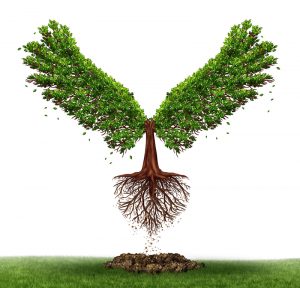
A significant period of disconnection from the habitual world is needed in order to have an opportunity to heal oneself from addiction. If there is no opportunity to do a healing process, then a complete change of environment is recommended to be able to reinvent oneself within less toxic surroundings. Addiction is not only created by the use of a substance. It is also in a correlation to the relationships established through the years of using and patterns of response to certain circumstances in the environment where one is living. It would be of great benefit to have a fresh start in a new location, where there is no relation with the substance and the inner circle that the person had while abusing substances.
We also need to consider the abuse between peers, family and friends. This dynamic creates an environment in which the addict becomes the one with a problem and the others become victims and rescuers. It becomes extremely hard to step out from those roles for all parts. The resolution of the relational dynamic that gave origin to the addiction does not only depend upon the one using drugs, it concerns the entire intimate circle. Specially the one that is financially sustaining the addiction.
Usually people who do treatment for addiction who immediately return to the environment of were the usage was originated or perpetuated after finishing their healing process, have at least 50% more probability of relapse in less than a year than the ones who established themselves in a new location for at least one year before returning to their known environment.
Ibogaine, Iboga TA and Iboga Rootbark
Ibogaine is the most powerful tool for interrupting any addictive state as the pleasure neuroreceptors are activated and stimulated throughout a relatively long period of time. In the case of opiate dependency, it does this not by acting as an opiate agonist or antagonist, but by enhancing opiate signalling. It is very important that substances are given an opportunity to fully leave the system before Ibogaine is administered, and that half-lives of all substances are taken into careful consideration. This process is especially sensitive with long-acting opiates such as methadone and buprenorphine. Although many people seek out Ibogaine treatment for its ability to mitigate withdrawal symptoms from short-acting opiates, it has been suggested that the safest route is to fully detox prior to ingesting Ibogaine.
Ibogaine is not only effective for interrupting addictions, but also very efficient for breaking destructive habits and behaviour patterns. Venturing on an Iboga journey is a personal and therapeutic experience that will create strong direct confrontations with elements that one is not accepting or does not want to see. The energy of the Iboga is very much straight to the point. It acts like a mirror that is held in front and one can’t avoid seeing what is there to be seen, usually parts of ourselves that we are not accepting and will need to confront.
The Iboga spirit is described as the grandfather of the plants. The Iboga plant has a masculine or Yang energy. It helps burn the overboard masculine energy and strengthens the core by solidifying healthy values in one’s heart. The energy of the Iboga serves greatly to enforce a structure that aligns the person to do what one feels is correct, nurturing rectitude in one’s life.
The cellular resetting takes place in what is commonly known as a “flood dose”. The flooding of the system leaves the body in a ”virgin” state, were participants can describe the after experience as depersonalisation or an absent or detached state. The person is able to feel life without the full emotional intensity and attachment that relationships and experiences may hold.
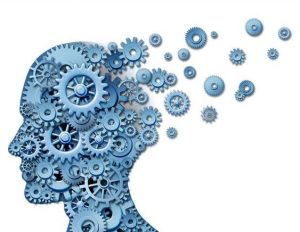
Iboga provides a full brain defragmentation and a thorough cellular cleansing. The flood dose can be given in a single session or through small micro doses until the alkaloid is accumulated enough during a period of time necessary for reaching the flooding of the system. Iboga is a multifaceted plant that offers a physical, mental and spiritual cleansing and grounding. Many people see Iboga as a profound way of pressing the reset button on life that provides a fresh start that leads to change. After taking iboga, one feels without desires and needs. This stage can last from 7 to 14 days and it is extremely important to utilise that time properly. A flood dose is like rebooting the operative system and the stimuli, emotions and energies that are connected during the 15 days after the flood dose are being encoded in the very core of the being.
The use of Ibogaine HCL requires medical supervision. It is not recommended to take Ibogaine alone or only with a sitter. There is a need for a serious screening process and many health factors need to be considered because during the experience each organism reacts differently to the biochemical effect of Ibogaine HCL. There is also a need to consider the energetic effect that the plant can have on participants with predominant masculine or feminine energy and also the lack of these energies in the participants’ life.
It is fairly safe to use Iboga root bark in micro dose or the total alkaloid extract (Iboga TA) with very little risk of potentially hazardous health situations. In both cases, a test dose should always be administered before ingesting greater quantities of either form of the plant.
The microdosing with the Iboga root bark serves to connect, integrate and embed the energy of the plant like any other Master Plant in an isolation process. The intake in this form is completely safe, in any case of allergic or hepatic reaction. The body will vomit the plant and symptoms will be clear before getting to a dangerous dose. The Iboga TA (Total Alkaloid) is the extract of the alkaloids of the plants, preserving the spirit of the Iboga, but removing all plant matter that is very heavy for the body to process. This is usually the form that is most recommendable for Psycho Spiritual Development and inner exploration. Also very safe to use if one performs a test dose first, then continues the intake of the plant in small doses until reaching flooding.
For the purpose of healing addictions, each plant has its place and time. The person can interrupt the addiction with only Ibogaine HCL or a combination of HCL and Iboga TA, but also give boosters to prolong relief benefits with micro doses of root bark (Powder or Tincture) or TA after 6 months or one year after finishing the treatment. More than choosing one form or another, a combination of all forms can give a good result and be a great tool for assisting the person in breaking free from addiction.
*Please do not try to ingest Ibogaine and Iboga TA without the supervision of a health care professional.
The Wounds of the Soul
The main 5 wounds that most humans have are Humiliation, Abandonment, Betrayal or Fear of Trusting Others, Rejection and Injustice. Perhaps the first one is not that common in the first world, of course with the exception of sexual abuse, but it is pronounced in the rest of the world. We need to understand that these wounds we all carry in one way or another, with different depths of trauma. The abuse of substances or drugs that is meant to alleviate the pain of these wounds comes from the sensory stimulation that triggers pleasure receptors that provides a false quick fix solution by giving a sensation of relief. It is important to see these wounds for what they are so we can begin to realize and confront the things we need to understand in order to begin to heal them.
Substance abuse is related to not having learned healthy ways of processing emotional pain and also from not having access to healthy tools that would bring healing to suffering.
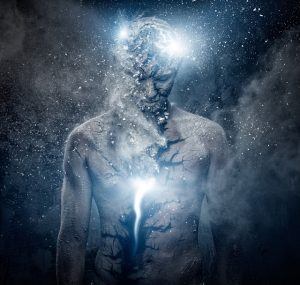
The reason why Alcohol is a legal drug in the Western world is the numbing effect it produces that deals with pain by creating a sense of escape from feeling. In high doses, one can live suppressed energies in a form of blackouts and find a type of relief through it. The suppressed content will, however, always remain unconscious, which will not bring any comprehension to the user. In reality, having sexual experiences in a drunk state or blackout, leaves the subtle body fully unprotected and a high degree of toxic energy is transferred. The same goes for most of hard substances and psychedelics that are used with the intention to escape, leaving the subtle body vulnerable to the surrounding energies.
The important thing to know is that those wounds exist and the only way for them to truly stop causing pain is by consciously healing them in a way that is bringing harmony and peace to ones life. It does not matter which tool we use, as long is healing the suffering that will lift the burden from its root.
There are many other forms of healing that can provide the same results. There are many great tools for healing and growth. My personal recommendation is to integrate in life as many tools as one finds helpful on the journey towards healing, self-development and self-realization. Looking at humanity in its current state, there is an immense need for healing and we have to find tools that truly allow us to comprehend from within the suffering that we are feeling as a species. The path is addressing, feeling and seeing it for what it is. The only purpose of suffering is to make us understand something very important that will make us evolve as spiritual beings.
Suffering is necessary until one comes to a point in evolution where one realizes that it is not. It is also important to know that these wounds can have many layers. It may be difficult to heal them fully and can take lifetimes. We can learn healthy ways to cope with them and learn tools that can bring healing into the layers of those wounds, but they will be present and we will need to heal them until we reach our freedom as spiritual beings. The important thing is to manage learning from our wounds and not only suffer through them.
Healing Substance Abuse or Drug Addiction
There is a need of great self-care and space devoted to digesting, processing and letting go of many emotional burdens that have been accumulated throughout the years of abusing substances. When one is using substances that numb emotions, one is emotionally processing life events in an undigested manner, which brings a huge energetic load that triggers even more the need to use tools to escape.
Beginning to heal the wounds of the soul will lead the path of freeing oneself from the need to numb the pain they create.
Confronting the world after a healing process will trigger these wounds in many ways and people with the tendency to abuse substance will need to learn healthy ways to manage emotions so they can be addressed in a way that brings comprehension and healing.
If there is a willingness to face and confront the most difficult sensations, emotions and frustrations that one could imagine and still move forward towards liberation, then there is a possibility to break free from addiction. If one can feel inside that there is a willingness to do whatever needs to be done, then it is time to do some serious healing. One should not play with the idea of wanting to break free while still wanting to remain close to the surroundings that were connected to the abuse of substances, including the intimate circle.
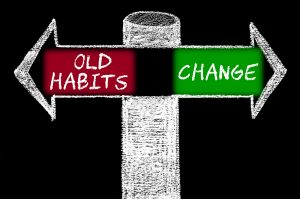
One should understand that breaking free from addiction, is breaking free from the world that co-created the problem. The best scenario is to change the environment were the addiction was created for a significant amount of time or the chances of relapse will be much higher. Our intention is not to exaggerate the already difficult challenge, but to warn about the the risks inherent in coming out of addiction when there is no change of environment after a healing process or, even worse, just after finishing the withdrawal process.
There are many destructive relationships in the intimate circle. Close “friends” depend on the addict to stay as he or she was, because the addict has unconsciously been cast to play the role of a scapegoat for the suffering of all involved. Both, people healing from addiction and their loved ones need to understand that their inner relational dynamic has a degree of contribution to how the addictive cycle is perpetuated in their lives. All are suffering, directly or indirectly from the addiction of the person. This act is unconscious and there is no one to blame or to accuse of injustice. It is better to simply acknowledge the given opportunity to understand that by healing the dynamic that created the addiction, one is completely removing the power that the substance has over the user.
Johann Hari in his book Chasing the Scream says:” The opposite of addiction is not sobriety; the opposite of addiction is connection.”
This statement is true on many levels. One needs to understand that connections can only be established by people able to connect with themselves. People abusing substances have been disconnected from themselves for a very long time and the most important connection that they need first, is with their own self. This is something that the work with master plants and entheogens can offer at the level of depth that would take years or even lifetimes of meditation or psychotherapy. It is important as Hari states, that the surrounding should encourage people with addiction to bond, that others accept them with love and care. The surrounding people would need to come out of the idea that they are relating to a person who is sick or ill. Instead they would need to see the person with substance abuse as someone who is suffering greatly due to the emotional pain they are feeling and that they are using a tool unacceptable in society to cope with that pain.
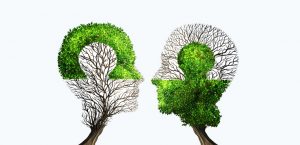
We all carry the suffering and pain of humanity in different depths of trauma. We also possess the same wounds that people with substance abuse have. The situation is not that different from persons using work, shopping or social media to escape and avoid feeling themselves. People with substance abuse only acquired a socially unacceptable tool to cope with their pain, but there is no difference between a cocaine addict and a smartphone addict who is also using a tool to cope with pain and seek relief. The same chemical secretions that are produced in a smartphone addict with every received notification and interaction are secreted in a person who is doing a line of cocaine. So right now almost all the world is having a relationship with their smartphones that is very similar as the one that an addict has with cocaine. It is estimated that 50% of teenagers are addicted to their smartphones, probably the percentage is even higher. So there we have a much more complex addiction that will affect the future generations in ways we cannot even comprehend.
One needs to have a clear understanding that healing addiction requires great strength, willingness, discipline and courage. It is not as simple as going to a treatment process and expecting that the healing magically happens or to think that if we begin to “love” the addicts, they will come out of addiction. There is no magic pill, recipe or potion. It all comes down to how the person with addiction decides to confront and live life after any type of healing process or after the moment of decision to stop using drugs. There is a need of a symbolic break from reality that gives a real chance of true healing from addiction. Otherwise the never-ending relapse episodes will take place through reconnecting to the same peers and surroundings.
In the healing processes that we have observed, assisted and guided regarding strong addictions, the participants who were able to fully come out of substance abuse, are the ones who after the treatment changed their entire environment and moved to a different location to have a fresh start in life. When it comes to the rest of participants, some were drug-free for a period of time. The world then slowly begins to enter into their lives and the old dynamics begin to get re-established until they finally fall back into the same compulsive behaviour. Very few are able to transform their inner circle to healthier relationships and reinvent themselves against all odds in the same environment in which they created the dependency. This last fight is the one between David and Goliath. Almost impossible, but always doable.
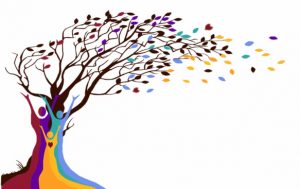
It is important to know that the relationships with the intimate circle will not be lost. They are only going to be transformed into a healthy dynamic that will bring harmony and peace to the entire group. In the current relationship dynamic the intimate circle is not only stressed, but very contaminated and very wounded as well through the years of abuse. The best decision after coming out of a healing process of addiction, is to completely change the environment for a significant period of time to give the opportunity to reinvent oneself from scratch.
Considering that the usual addiction parameter goes from 10 to 15 years of dependency, the recommendation for a serious healing process can only be significant if 6 to 12 months are dedicated solely to healing. This amount of time focused on healing is needed to compensate for so much damage done through decades of intake of drugs that are basically poison and negatively charged energy. The other reason is the intention to heal the emotional wounds to a level that the person is able to confront life without the need to numb their pain, which in turn will make them able to connect with others in a healthy way.
We encourage people coming out of substance abuse to rebuild their lives in a place different from the place that revolved around the addiction cycle. The best scenario is that people coming out of a healing treatment for addiction can live or study or work somewhere entirely different for at least a couple of years so they have the opportunity to rebuild themselves sufficiently to stand solidly on their new ground.
A full decision and commitment towards healing is necessary in order to break free from the cycle of addiction. There is no magic wand, there is only the willingness to address and confront the wounds that need to be healed, so there is no need to carry on with life with a sense of pain that is unmanageable. Taking responsibility for our emotional burden is a more responsible and healthy way, utilising tools that allow true healing and are helping us to cope with the tribulations of life.
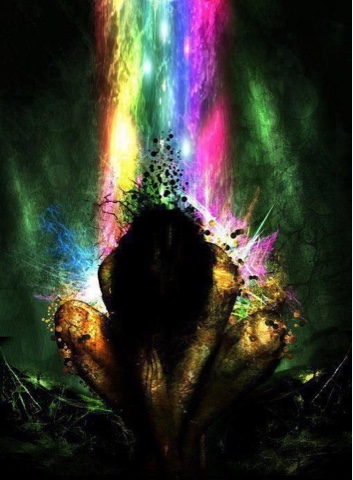
In short, healing addiction with master plants and entheogens can offer an immense opportunity for growth as the person with addiction can transform tons of suffering into tons of comprehension. The main key elements to heal addiction can be addressed with entheogens in a way that gives the person an encounter with their self and allows the possibility to be able to truly connect with others and their environment. It allows people to become their own healers as the answers they felt help them heal and came from within themselves. The healing process gives the opportunity to learn how to manage emotions in a healthy way and accept them as part of life. It also offers an opportunity to find peace as one is able to accept oneself in its whole spectrum of qualities, weaknesses, sufferings, darkness, light, ignorance and truth. This is what finally frees people from addiction, the acceptance of oneself with all that comes with it. Being able to stay present and at peace with the now. So there is no need to escape, to numb or to avoid.
Almost everyone is addicted, dependant or abusing of something one way or the other. If we believe addiction to be an incurable disease, then humanity is doomed. We need to take the ”addict” label off of the people abusing substances and stop treating them as such. We need to be very transparent with the situation we are living as humanity and acknowledge that the true force of all addictions is the fear to be with our own selves and not merely in the use of substance itself. Almost everyone is using tools to avoid themselves and ease their pain. We are all part of this chain of collective suffering with a huge fear of feeling who we truly are. The purpose of addiction as such, is to make us aware that we do not want to accept parts of ourselves that we feel we need to escape from. We do not want to see our suffering, our “dark” side, our pain. Mainly we do not want to come out of the false ideas about who we think we are and we are terrified to embrace who we truly are.

The work with entheogens and master plants can be one of the most powerful tools that enable us to see our suffering for what it is and transform it into wisdom so it does no longer carry any unbearable pain. The compassion one is able to feel from the universe through the sacred experience of connecting to the heart, can give us sufficient courage to embrace our “dark” side and be able to shine awareness onto it so we can see the truth. The false idea that we have of ourselves is the main cause of our suffering. The experience with master plants can allow us to see what we are not seeing. It can help us discover ourselves as eternal beings. The healing process with entheogens and master plants can offer an incredible opportunity for transformation that can lead humanity to not only break free from addiction, but also guide us towards our own self-realization as spiritual beings.
